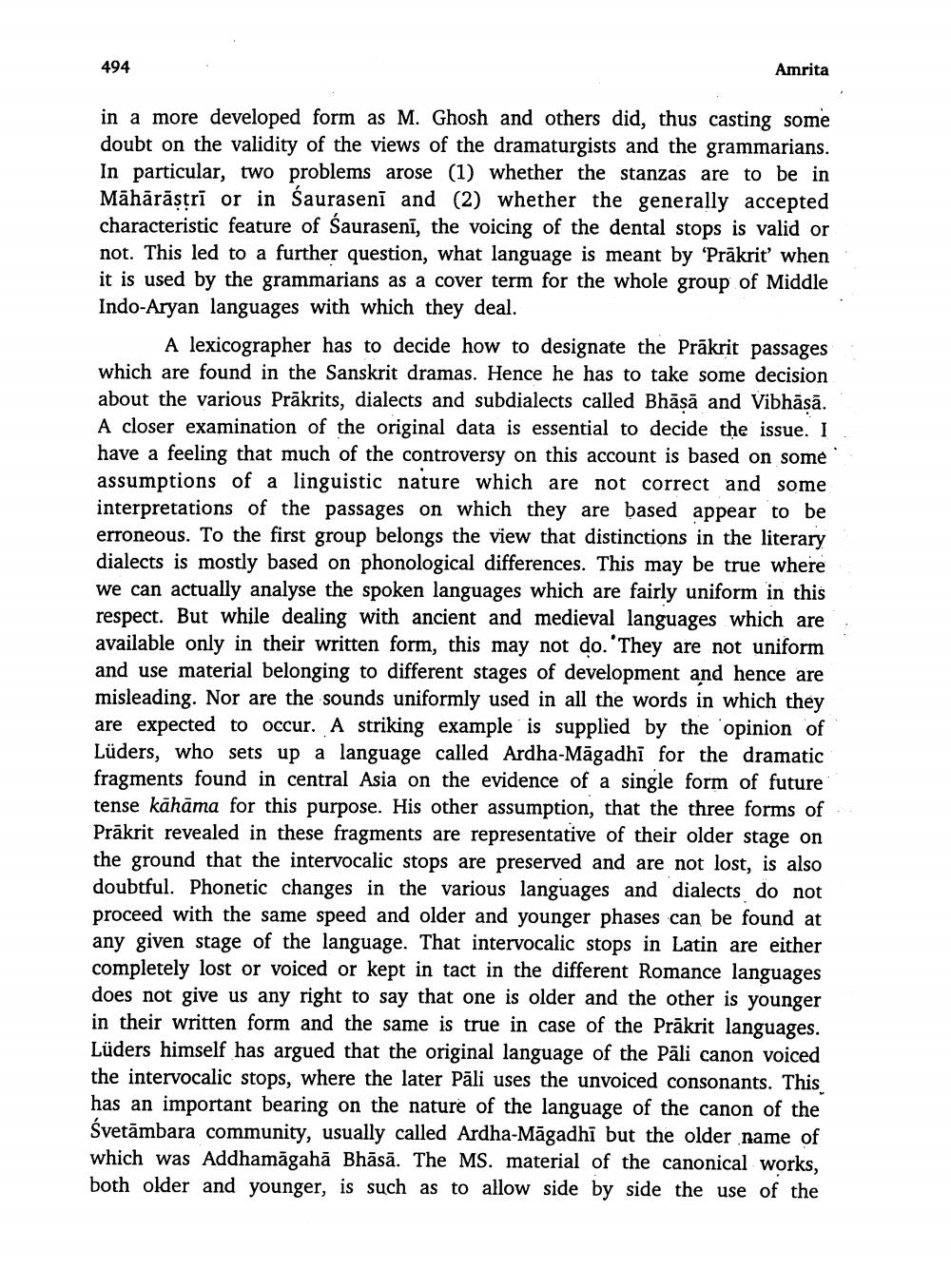________________
494
Amrita
in a more developed form as M. Ghosh and others did, thus casting some doubt on the validity of the views of the dramaturgists and the grammarians. In particular, two problems arose (1) whether the stanzas are to be in Māhārāstri or in Sauraseni and (2) whether the generally accepted characteristic feature of Saurasenī, the voicing of the dental stops is valid or not. This led to a further question, what language is meant by 'Prākrit when it is used by the grammarians as a cover term for the whole group of Middle Indo-Aryan languages with which they deal.
A lexicographer has to decide how to designate the Prākrit passages which are found in the Sanskrit dramas. Hence he has to take some decision about the various Prākrits, dialects and subdialects called Bhāsā and Vibhāsā. A closer examination of the original data is essential to decide the issue. I have a feeling that much of the controversy on this account is based on some assumptions of a linguistic nature which are not correct and some interpretations of the passages on which they are based appear to be erroneous. To the first group belongs the view that distinctions in the literary dialects is mostly based on phonological differences. This may be true where we can actually analyse the spoken languages which are fairly uniform in this respect. But while dealing with ancient and medieval languages which are available only in their written form, this may not do. 'They are not uniform and use material belonging to different stages of development and hence are misleading. Nor are the sounds uniformly used in all the words in which they are expected to occur. A striking example is supplied by the opinion of Lüders, who sets up a language called Ardha-Māgadhī for the dramatic fragments found in central Asia on the evidence of a single form of future tense kāhāma for this purpose. His other assumption, that the three forms of Prākrit revealed in these fragments are representative of their older stage on the ground that the intervocalic stops are preserved and are not lost, is also doubtful. Phonetic changes in the various languages and dialects do not proceed with the same speed and older and younger phases can be found at any given stage of the language. That intervocalic stops in Latin are either completely lost or voiced or kept in tact in the different Romance languages does not give us any right to say that one is older and the other is younger in their written form and the same is true in case of the Prākrit languages Lüders himself has argued that the original language of the Pāli canon voiced the intervocalic stops, where the later Pāli uses the unvoiced consonants. This has an important bearing on the nature of the language of the canon of the Svetāmbara community, usually called Ardha-Māgadhi but the older name of which was Addhamāgahā Bhāsā. The MS. material of the canonical works, both older and younger, is such as to allow side by side the use of the




